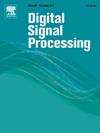Efficient spatial-temporal feature aggregation for multivariate time series forecasting with STCA
IF 2.9
3区 工程技术
Q2 ENGINEERING, ELECTRICAL & ELECTRONIC
引用次数: 0
Abstract
Multivariate time series (MTS) prediction plays a crucial role in many practical applications. Although spatio-temporal graph neural networks (STGNNs) have demonstrated excellent performance in MTS prediction due to the advantages of graph convolutional networks and time series modeling, their high computational complexity limits their applicability in resource constrained environments. To improve prediction accuracy while maintaining model simplicity and computational efficiency, inspired by Spatial-temporal identity (STID), this paper introduces a novel MTS prediction framework—Spatial-Temporal Channel Aggregation (STCA). This framework consists of two modules: the Channel Point Aggregation Fusion module (CPAF) enhances the capture of local spatial information and efficiently models temporal dependencies through depthwise separable convolutions and pointwise convolutions. the Selective Attention(SelAttn) module employs a self-attention mechanism to uncover complex dependencies among features. Experimental results show that STCA outperforms existing methods on multiple benchmark datasets, achieving higher prediction accuracy while significantly reducing training time.
基于STCA的多变量时间序列预测的高效时空特征聚合
多元时间序列(MTS)预测在许多实际应用中起着至关重要的作用。尽管由于图卷积网络和时间序列建模的优势,时空图神经网络(stgnn)在MTS预测中表现出优异的性能,但其较高的计算复杂度限制了其在资源受限环境中的适用性。为了在保持模型简单性和计算效率的同时提高预测精度,受时空同一性(Spatial-temporal identity, STID)的启发,提出了一种新的MTS预测框架——时空信道聚合(Spatial-temporal Channel Aggregation, STCA)。该框架由两个模块组成:通道点聚合融合模块(CPAF)通过深度可分卷积和点向卷积增强了局部空间信息的捕获,并有效地建模了时间依赖性。选择性注意(SelAttn)模块使用自注意机制来发现功能之间复杂的依赖关系。实验结果表明,STCA在多个基准数据集上优于现有方法,在显著减少训练时间的同时获得了更高的预测精度。
本文章由计算机程序翻译,如有差异,请以英文原文为准。
求助全文
约1分钟内获得全文
求助全文
来源期刊

Digital Signal Processing
工程技术-工程:电子与电气
CiteScore
5.30
自引率
17.20%
发文量
435
审稿时长
66 days
期刊介绍:
Digital Signal Processing: A Review Journal is one of the oldest and most established journals in the field of signal processing yet it aims to be the most innovative. The Journal invites top quality research articles at the frontiers of research in all aspects of signal processing. Our objective is to provide a platform for the publication of ground-breaking research in signal processing with both academic and industrial appeal.
The journal has a special emphasis on statistical signal processing methodology such as Bayesian signal processing, and encourages articles on emerging applications of signal processing such as:
• big data• machine learning• internet of things• information security• systems biology and computational biology,• financial time series analysis,• autonomous vehicles,• quantum computing,• neuromorphic engineering,• human-computer interaction and intelligent user interfaces,• environmental signal processing,• geophysical signal processing including seismic signal processing,• chemioinformatics and bioinformatics,• audio, visual and performance arts,• disaster management and prevention,• renewable energy,
 求助内容:
求助内容: 应助结果提醒方式:
应助结果提醒方式:


